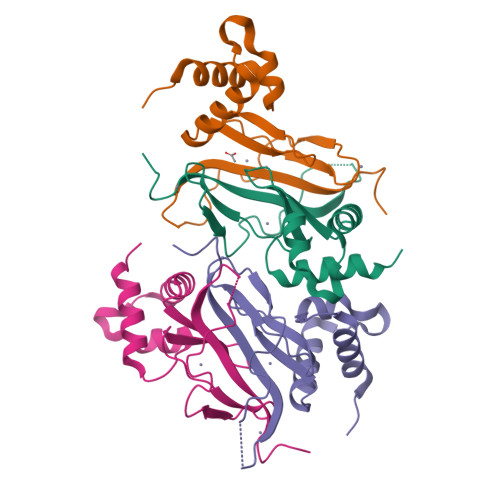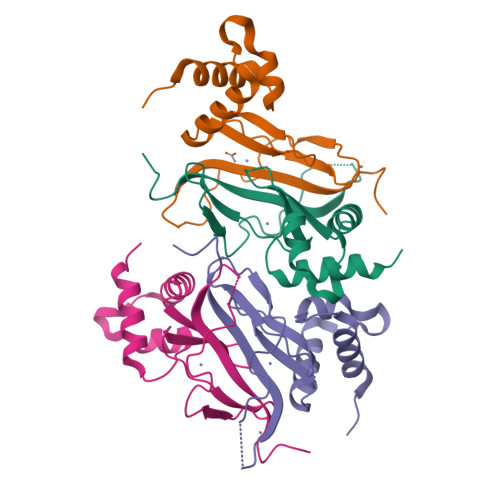A single sensor controls large variations in zinc quotas in a marine cyanobacterium.
Mikhaylina, A., Ksibe, A.Z., Wilkinson, R.C., Smith, D., Marks, E., Coverdale, J.P.C., Fulop, V., Scanlan, D.J., Blindauer, C.A.(2022) Nat Chem Biol 18: 869-877
- PubMed: 35681030
- DOI: https://doi.org/10.1038/s41589-022-01051-1
- Primary Citation of Related Structures:
7NE9 - PubMed Abstract:
Marine cyanobacteria are critical players in global nutrient cycles that crucially depend on trace metals in metalloenzymes, including zinc for CO 2 fixation and phosphorus acquisition. How strains proliferating in the vast oligotrophic ocean gyres thrive at ultra-low zinc concentrations is currently unknown. Using Synechococcus sp. WH8102 as a model we show that its zinc-sensor protein Zur differs from all other known bacterial Zur proteins in overall structure and the location of its sensory zinc site. Uniquely, Synechococcus Zur activates metallothionein gene expression, which supports cellular zinc quotas spanning two orders of magnitude. Thus, a single zinc sensor facilitates growth across pico- to micromolar zinc concentrations with the bonus of banking this precious resource. The resultant ability to grow well at both ultra-low and excess zinc, together with overall lower zinc requirements, likely contribute to the broad ecological distribution of Synechococcus across the global oceans.
Organizational Affiliation:
Department of Chemistry, University of Warwick, Coventry, UK.




















